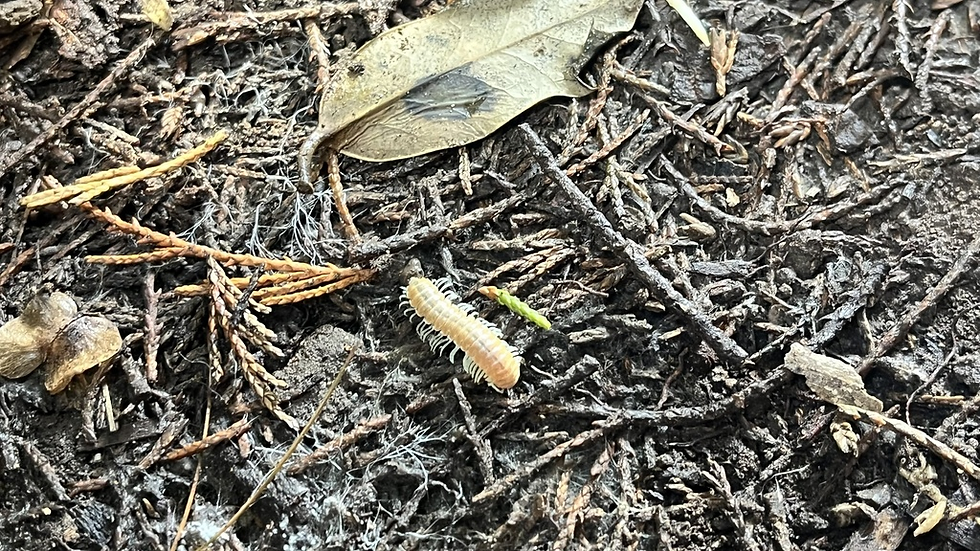Fluorescent Millipede Found at CCAG
- CCAG

- Dec 23, 2024
- 2 min read
When you think of millipedes, you think of basic small brown strings with more than a hundred legs.

What you don't think of, however, is this millipede. Above is a picture of Xystocheir dissecta, a 1 inch blind fluorescent millipede, that can produce hydrogen cyanide.
This millipede is found only in the redwoods of the Bay Area. Other members of the genus Xystocheir are found throughout California, although the species are not studied as well.
Despite it's habitat in deep undisturbed forested areas, I have found populations right outside the CCAG. A few winters ago, I searched them up on Google, which identified it as Xystocheir dissecta. As spring came around and rains became infrequent, I saw less of these guys as they went back under the soil.
Quick facts:
the millipede is endemic to the Bay Area. It is not endangered, but quite common
it produces small brown globs hydrogen cyanide from its rear end. When a a small predator like an insect tries to consume it, it is quickly killed by the millipede's poison. Small amounts of benzaldehyde make the millipede smell like almond when handled.
Though this small amount of cyanide is deadly to most small animals, it is not potent to humans.
A specific type of ground beetle that has built tolerance to the poison.
The millipede is blind and nocturnal. It usually prefers dark forested areas where there is a lot of decaying foliage.
It eats decaying plant material, making it a large contributor to decomposition.

An adult Xystocheir dissecta at CCAG
Where to find it at the CCAG ?
As I mentioned above, this species naturally occurs under rocks around the area underneath the large cypress tree. It is found from November-April. During the spring and summer months, it hibernates underneath the soil.
Most adults at the CCAG are found near the cypress trees. Occasionally, juveniles are dug up around surrounding soils. The juveniles are usually paler and softer than adults.

We are on a mission to help this millipedes!
Our job as the CCAG is to create a safe habitat so these millipedes can continue to thrive. We are planning on planting some Western Shield Ferns (Polystichum munitum) and some Coastal Woodferns (Dryopteris arguta), two native ferns that are found growing wild throughout the habitat of the millipedes. The ferns will provide additional shade for the millipedes. We are also adding wood, providing additional hiding places for them.

We do keep some of these in captivity. If you would like to see them in real life, head over to the CCAG before it gets dry
!



Comments